Welcome to my comprehensive wrasse fish care guide, where we will explore the fascinating world of these colorful and lively fish. Wrasse fish are a family of marine fish known for their vibrant colors, unique behaviors, and stunning patterns. They are a popular choice for aquarium hobbyists due to their captivating beauty and hardy nature.
In this guide, we’ll cover everything you need to know about wrasse fish care, including the different species, their behavior, how to create an ideal habitat, proper nutrition, and more.
Table of Contents
Key Takeaways:
- Wrasse fish are known for their vibrant coloration, unique behaviors, and hardy nature
- This guide will cover various topics such as the different species of wrasse, their behavior, and how to create the ideal habitat for them
- Proper nutrition, acclimation procedures, and tank maintenance are key components of wrasse care
- It’s important to select compatible tankmates and address common misconceptions about wrasse fish
- Observing and interacting with your wrasse can be a rewarding experience for any aquarium hobbyist
Understanding Wrasse Fish
Wrasse fish are a diverse group of marine fish with over 500 species found around the world. Each species has its unique characteristics, including behavior and appearance.
One of the most popular types of wrasse is the fairy wrasse. These fish are known for their bright colors and distinct patterns, making them a favorite among reef enthusiasts. Other types of wrasse species include the six-line wrasse, cleaner wrasse, and leopard wrasse.
Understanding wrasse behavior is crucial for providing proper care. Many wrasse species are active swimmers and require an ample swimming space to thrive. Some species, such as cleaner wrasses, have unique behaviors, such as removing parasites and dead skin from other fish.
Pro tip: Observe your wrasse fish closely to understand their unique personalities and behaviors.
It’s essential to research the different types of wrasse fish before selecting the right species for your tank. Each species has its specific care needs and may not be compatible with other fish or invertebrates in your tank. Consult with a professional or experienced hobbyist to ensure compatibility before introducing new fish to your aquarium.
Choosing the Right Wrasse Species
Choosing the right wrasse species for your tank is vital to ensure harmonious coexistence with other fish and invertebrates.
Consider the size and temperament of the wrasse species you want to add to your tank. Wrasse species vary in size, with some growing as little as two inches (6 cm) and others reaching up to two feet (60 cm). It’s essential to choose a wrasse species that can comfortably fit in your tank and not outgrow it quickly.
One wrasse species may have a peaceful temperament, while another may be more aggressive. Be sure to research the behaviors of the wrasse species you’re interested in before making a purchase, and avoid adding aggressive species with peaceful ones, as they can harm or kill each other.
It’s also crucial to select wrasse species that are compatible with your existing tankmates. Wrasse fish prefer to swim in the open water column and occupy the same swimming space as others. Avoid crowded tanks, as these can lead to aggressive behavior and potential health problems.
Examples of Compatible and Incompatible Wrasse Species
| Compatible Wrasse Species | Incompatible Wrasse Species |
|---|---|
| Fairy Wrasse | Humphead Wrasse |
| Green Wrasse | Harlequin Tusk |
| Yellow Wrasse | Dragon Wrasse |
Remember, choosing the right wrasse species requires careful consideration of factors such as size, temperament, and compatibility with other fish and invertebrates in your tank. A healthy and vibrant wrasse community will yield enjoyment and pleasure for years to come.
Setting Up the Ideal Wrasse Habitat
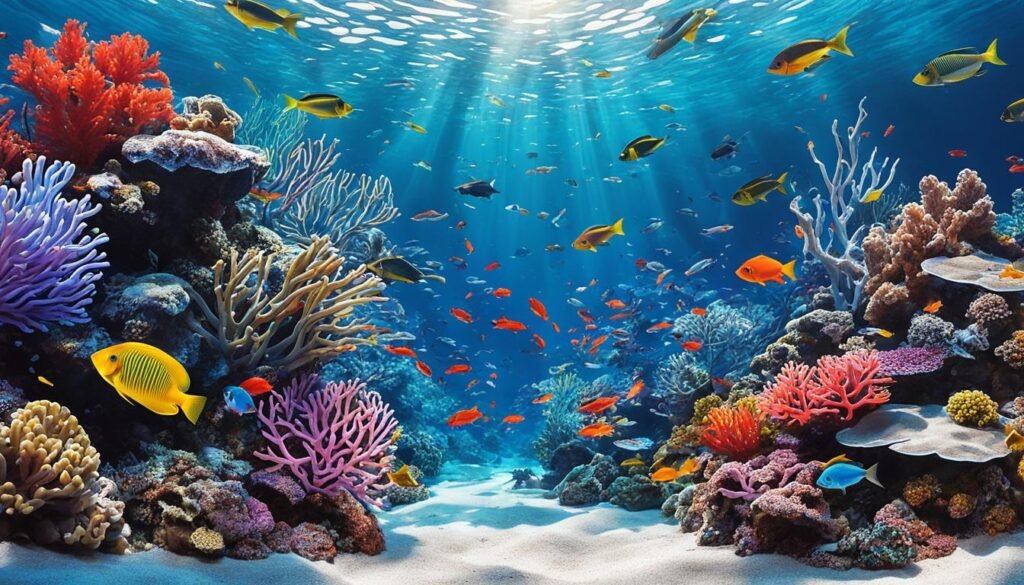
Creating the perfect home for your wrasse fish is crucial to their well-being. Let’s dive into the key elements that make up an ideal wrasse habitat.
Tank Size and Layout
Wrasse fish are active swimmers and need plenty of room to move about freely. A rule of thumb is to provide at least 50 gallons of water per adult wrasse. The tank should have ample open swimming space, as well as hiding spots and caves for the wrasses to retreat to when feeling stressed or threatened.
Water Parameters
Wrasse fish are sensitive to water quality, so it’s essential to maintain suitable tank conditions. Keep the water temperature between 75-82°F, the pH between 8.1-8.4, and the salinity level between 1.020-1.025. Installing a quality filtration system and performing regular water changes can help ensure optimal water quality.
Hiding Spots
Wrasse fish enjoy having hiding spots in their habitat, and providing suitable shelters is essential to reduce their stress levels. Adding live rock and coral can provide both a hiding spot and a natural environment for the wrasses to explore.
Bright Lighting
To best showcase the vibrant colors of wrasse fish, use bright lighting that simulates the intensity of the sun. Wrasse love to swim in sunlight, so it’s essential to provide adequate lighting to replicate their natural habitat.
With these key elements in place, your wrasse fish will thrive in their new home. In the next section, we’ll explore the best diet and feeding practices to ensure their health and vitality.
Wrasse Diet and Feeding Tips
Feeding your wrasse fish a healthy and balanced diet is essential for their overall well-being. Wrasse have a unique diet compared to other fish, primarily feeding on small crustaceans, worms, and other invertebrates found in the wild. Mimicking their natural diet is key to maintaining their health, and should consist of a variety of live, frozen, and dry foods.
Live foods such as brine shrimp, mysis shrimp, and copepods replicate the wrasse’s diet in the wild and provide essential nutrients for their immune system. Frozen foods such as bloodworms, krill, and plankton are also a great source of nutrition for your wrasse fish. Be sure to include dry food, such as high-quality pellet or flake food, in their diet as well.
Please note that wrasse have a small stomach and require frequent feedings throughout the day. Overfeeding can lead to health problems such as obesity, so it’s essential to provide an appropriate amount of food at each feeding time.
Feeding Frequency
I typically feed my wrasse fish 2-3 times a day in small portions. By spreading out feeding sessions throughout the day, it allows the wrasse to graze and forage, simulating their natural feeding behaviors.
Table with recommended foods:
| Food Type | Recommended | Occasional | Avoid |
|---|---|---|---|
| Live Foods | Brine Shrimp, Mysis Shrimp, Copepods | Mollusks, Krill | Large Invertebrates such as Crabs or Scallops |
| Frozen Foods | Bloodworms, Krill, Plankton | Mysis Shrimp, Squid | Large Fish Fillets or Meats |
| Dry Foods | High-quality Pellets, Flakes | N/A | Cheap and Low-quality Foods |
Remember to mix up your wrasse’s diet for optimal nutrition and to provide a varied menu. Additionally, avoid any foods that contain copper, such as certain medications, as it can be toxic to wrasse and other invertebrates. Overall, by following these feeding tips and maintaining a balanced diet, you can keep your wrasse fish healthy and happy.
Introducing Wrasse Fish to Your Tank
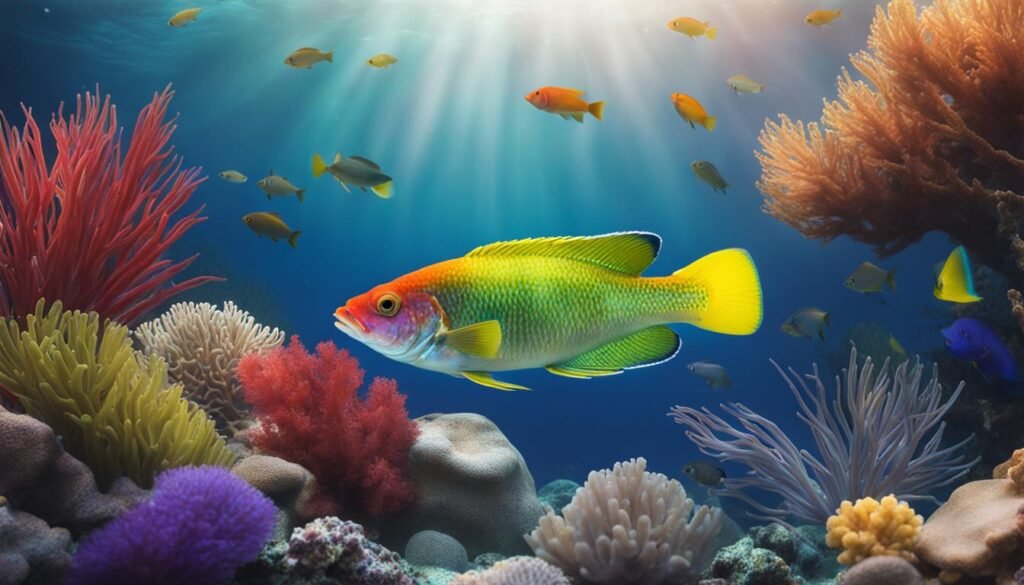
Introducing new fish to your tank can be an exciting yet delicate process, and wrasse fish are no exception. Proper acclimation and quarantine procedures are essential for minimizing stress and ensuring the health of both new and existing tank inhabitants.
The first step is to quarantine the wrasse fish for a few weeks in a separate tank. This helps to prevent the spread of potential diseases and parasites to your main tank. During this time, closely monitor the wrasse for any signs of illness, such as loss of appetite, abnormal behavior, or physical abnormalities.
When it’s time to introduce the wrasse to your main tank, it’s important to do so gradually. Begin by floating the bag containing the wrasse in your tank for about 15-20 minutes to allow the water temperature to equalize. Next, slowly add small amounts of water from your tank to the bag over a period of 30-45 minutes, until the bag is filled with a mixture of both tank and bag water. This process, known as drip acclimation, helps to minimize stress by gradually introducing the fish to your tank’s water chemistry and temperature.
Once the acclimation is complete, carefully release the wrasse into your tank, ideally when the lights are out to reduce stress. Keep an eye on the wrasse over the next few days to ensure it’s adjusting well to its new environment and is not showing signs of stress or illness.
It’s also important to consider wrasse compatibility when introducing them to your tank. Some species can be aggressive towards other fish or invertebrates, while others are peaceful community fish. Do your research and choose wrasse species that are compatible with your existing tank inhabitants.
Reproduction and Breeding of Wrasse Fish
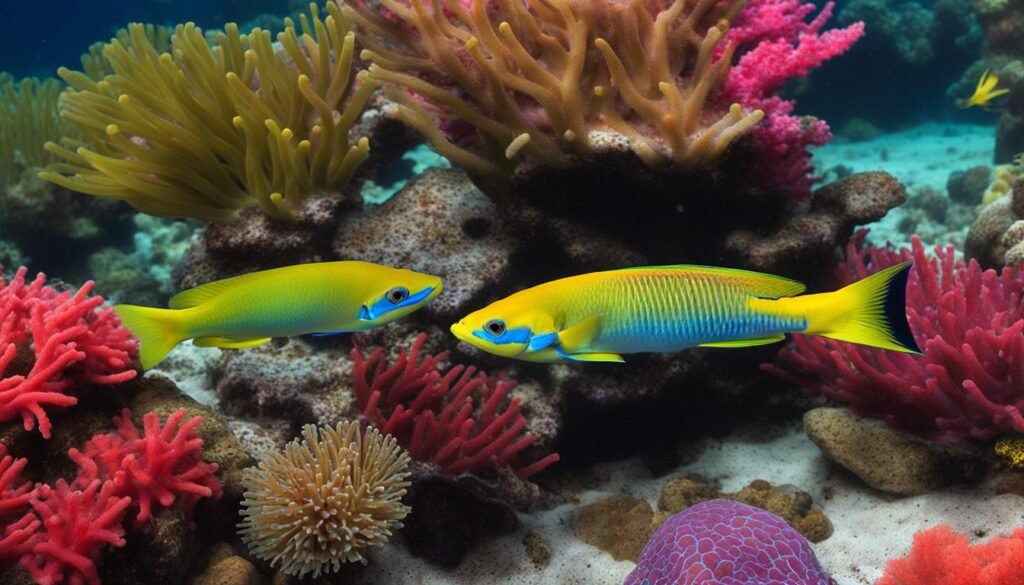
One of the most fascinating aspects of wrasse fish is their reproductive behavior. However, breeding them in a home aquarium poses unique challenges. In this section, I’ll provide insights on creating optimal conditions for wrasses to spawn and raise their young.
Wrasse Spawning Behaviors
Most wrasse species are protogynous hermaphrodites. This means that they start off as females and later transition into males. When it comes to spawning, the male wrasse will often display elaborate courtship rituals to attract a female.
Once they have paired off, the female will lay adhesive eggs on a surface in the tank, such as coral or rock. The male then fertilizes the eggs and guards them until they hatch.
Challenges in Home Breeding
While wrasse fish have been bred in captivity, it can be challenging for home aquarists to replicate their natural spawning behaviors in a tank setting. Factors such as water quality, tank size, and appropriate tankmates can all impact the success of breeding wrasse fish.
Creating Optimal Breeding Conditions
To increase the chances of successful wrasse breeding, it’s essential to create the ideal environment for the fish. This may include providing plenty of hiding spots and live rock, maintaining ideal water parameters, and carefully selecting compatible tankmates.
| Wrasse Species | Temperament | Compatibility with Other Fish |
|---|---|---|
| Cleaner Wrasse | Peaceful | Compatible with most tankmates, may sometimes pick at the scales of larger fish |
| Six-Line Wrasse | Territorial | Best kept alone or with other aggressive species, may bully passive tankmates |
| Fairy Wrasse | Peaceful | Compatible with most tankmates, may sometimes be bullied by larger fish |
By providing the right environment and conditions for wrasse fish to spawn, you can enjoy the beauty of watching these captivating fish raise their young in your home aquarium.
Common Health Issues in Wrasse Fish

As with any pet, it’s important to keep a close eye on your wrasse fish for any signs of health problems. While wrasse fish are generally hardy, they can still be prone to certain health issues that can affect their well-being if left untreated. In this section, we’ll explore some of the most common health problems in wrasse fish and how to prevent and treat them.
Ich and other Parasites
Ich, or white spot disease, is one of the most common parasitic ailments that can affect wrasse fish. This highly contagious disease can cause white spots to appear on the fish’s body and fins, and can also cause itching and scratching. Other parasites, such as velvet and flukes, can also affect wrasse fish.
Prevention is key when it comes to parasites. Keeping your tank clean and well-maintained can help prevent infestations. If you do notice signs of parasites in your wrasse fish, fish-specific medications are available to treat the issue.
Fin Rot
Fin rot is a bacterial disease that can cause the fins of your wrasse fish to become frayed or disintegrating. It’s typically caused by poor water quality or injuries sustained from rough handling or scrapes against objects in the tank.
Maintaining a clean tank environment and avoiding overcrowding can help prevent fin rot. If you do notice signs of fin rot in your fish, water changes and antibiotic treatments can help clear up the infection.
Stress
Stress can be a common issue for wrasse fish if they are not kept in a suitable environment. Overcrowding, incompatible tankmates, and poor water quality can all contribute to stress in fish, which can lead to a weakened immune system and increased susceptibility to disease.
Ensuring that your wrasse tank is well-maintained, properly stocked with compatible fish and invertebrates, and provides adequate hiding spots and swimming space can all help reduce stress and keep your wrasse fish healthy and thriving.
| Common Health Issues | Prevention Tips | Treatment Options |
|---|---|---|
| Ich and other parasites | Keeping the tank clean and well-maintained; quarantining new fish before adding them to the tank | Treatments for fish-specific parasites are available |
| Fin rot | Maintaining good water quality; avoiding overcrowding | Water changes and antibiotic treatments |
| Stress | Keeping a suitable environment with compatible tankmates and hiding spots | Addressing the underlying causes of stress; creating a calm and comfortable environment |
By staying alert for any signs of health problems in your wrasse fish, you can prevent and treat these issues before they become serious. With proper care and attention, your wrasse fish can live a happy and healthy life in your aquarium.
Tankmates for Wrasse Fish
Choosing the right tankmates for your wrasse fish is essential for creating a peaceful and harmonious aquarium community. Not all fish and invertebrates are compatible with wrasse, so it’s important to consider size, temperament, and behavior when selecting tankmates. Here are some compatible options:
Fish Species
| Fish | Compatibility |
|---|---|
| Clownfish | Compatible |
| Goby | Compatible |
| Dartfish | Compatible |
| Blennies | Compatible |
| Tangs | Not Compatible |
| Angelfish | Not Compatible |
| Triggerfish | Not Compatible |
Invertebrates
Wrasse fish are generally compatible with invertebrates such as snails, shrimps, and crabs. However, it’s important to note that some wrasse species may see small invertebrates as prey. Here are some compatible options:
By selecting compatible tankmates and creating a suitable environment, your wrasse fish can thrive in a peaceful and thriving aquarium community.
Maintenance and Cleaning Tips for Wrasse Tanks
Proper cleaning and maintenance of your wrasse tank are crucial for the health and longevity of your fish. Here are some wrasse care tips for keeping your tank sparkling clean and your fish happy:
Regular Tank Maintenance
Perform regular water changes every two to four weeks to remove excess nutrients and prevent the buildup of harmful chemicals in the water. Keep an eye on the temperature and salinity levels of the water using a reliable thermometer and hydrometer to ensure they are within the ideal range for your wrasse species.
Water Quality Management
Test the water quality regularly, preferably weekly, to ensure that the levels of ammonia, nitrites, nitrates, and pH are within the acceptable range. Take appropriate measures to correct any fluctuations in these levels using specialized products like nitrate and phosphate removers, if necessary.
| Parameter | Ideal Range |
|---|---|
| Temperature | 76-82°F (24-28°C) |
| Salinity | 1.020-1.025 SG |
| Ammonia (NH3) | 0 ppm |
| Nitrite (NO2-) | 0 ppm |
| Nitrate (NO3-) | 5-10 ppm |
| pH | 8.1-8.4 |
Filter Maintenance
Make sure that your filtration system is properly functioning and the filter media are clean and clog-free. The filter media should be cleaned or changed regularly, depending on the type of filter and the number of fish in the tank.
Preventing Algae Growth
Algae thrive in the presence of excess nutrients, so make sure to remove any uneaten food and debris from the tank promptly. Consider feeding your wrasse fish smaller amounts of food multiple times a day rather than one large feeding to avoid overfeeding.
Common Misconceptions About Wrasse Fish
Wrasse fish are often misunderstood and misrepresented in the aquarium community. Below, I’ll address some of the most common misconceptions about wrasses and provide accurate information to help you better understand these fascinating fish.
Myth: All Wrasse Species are Aggressive
While it’s true that some wrasse species can be territorial and even aggressive towards tankmates, not all wrasses exhibit this behavior. In fact, some wrasse species are known for their peaceful temperament and can coexist harmoniously with other fish and invertebrates in a community tank. It’s important to research the behavior of each species before adding them to your tank and select compatible tankmates accordingly.
Myth: Wrasse Fish are High-Maintenance
Wrasse fish are actually quite hardy and low-maintenance, making them a great choice for both beginner and experienced aquarists. While it’s true that some wrasse species have specific feeding and habitat requirements, these are generally easy to meet with proper research and care. Creating a suitable habitat with plenty of hiding spots and appropriate water parameters can help reduce stress and ensure the health and well-being of your wrasse fish.
Myth: Wrasse Fish Require Sand Substrate
While many wrasse species do prefer sand substrate as it mimics their natural habitat, not all wrasses require this type of substrate. Some wrasse species, such as cleaner wrasses, prefer bare bottom tanks with plenty of hiding spots. It’s important to research the specific habitat requirements of each species before setting up your tank to ensure their comfort and well-being.
Myth: Wrasse Fish are Not Suitable for Reef Tanks
While some wrasse species may nip at coral and other reef inhabitants, there are many wrasse species that are suitable for reef tanks. Fairy wrasses, for example, are known for their peaceful temperament and stunning colors, making them a popular choice for reef enthusiasts. Again, it’s important to research the behavior of each species and select compatible tankmates to ensure a harmonious and thriving aquarium community.
Remember, it’s important to separate fact from fiction when it comes to caring for your wrasse fish. By understanding their behavior and habitat requirements, you can provide a suitable environment that promotes their health and well-being.
Tips for Observing and Interacting with Wrasse Fish
Interacting with wrasse fish can be a rewarding experience, but it’s important to do so in a way that minimizes stress and maximizes their natural behaviors. Here are some tips for observing and interacting with your wrasse:
Watch Their Behavior
Pay attention to your wrasse’s behavior to learn more about their personality. Different wrasse species have unique behaviors, such as hopping from rock to rock or burying themselves in the sand. Understanding your wrasse’s behavior can help you identify if they are stressed or if something is off in their environment.
Feeding Strategies
Be mindful of your wrasse’s feeding habits. Some species tend to graze during the day, while others prefer to hunt at night. Offer a variety of foods, such as live or frozen brine shrimp and mysis shrimp, to mimic their natural diet. Additionally, avoid overfeeding your wrasse fish as it can lead to health problems.
Create Interactive Toys
Wrasse fish are intelligent and benefit from toys that stimulate their environment and keep them entertained. One option is creating a PVC pipe with multiple holes drilled into it, allowing the wrasse to play and hide. Additionally, adding a small mirror to the tank is a fun way for wrasses to “interact” with their reflection.
These tips can help you create a deeper connection with your wrasse fish while maximizing their natural behaviors. Remember to always observe and interact with them in a way that minimizes stress and promotes a happy, healthy life.
Enhancing the Beauty of Wrasse Fish Through Decor
To create a visually engaging and functional habitat for your wrasse fish, selecting the right decor is crucial. From live rock and coral to sand substrate, there are a variety of options to choose from.
Firstly, consider the type of wrasse species you have and their natural habitat requirements when selecting tank decor. For example, some wrasses are reef-safe and require live rock and coral to thrive, while others prefer sandy substrates with plenty of hiding spots.
Adding unique elements like driftwood, caves, and artificial plants can also enhance the beauty of your wrasse habitat. Try to mimic their natural environment as much as possible to promote their natural behaviors and well-being.
When designing your wrasse tank, keep in mind the importance of negative space. Overcrowding your tank can be stressful for your fish and make it difficult to appreciate their vibrant colors and patterns.
Remember to also consider the practical aspects of tank decor, such as ease of cleaning and maintenance. Fragile or difficult-to-clean ornaments can make the maintenance of your tank more challenging than it needs to be.
Aquarium Decor Do’s and Don’ts for Your Wrasse Tank
| Do: | Don’t: |
|---|---|
| Add live rock and coral to mimic a natural reef environment. | Overcrowd your tank with decor or livestock. |
| Include plenty of hiding spots and negative space for your wrasses to thrive. | Add decor that can be difficult to clean or maintain. |
| Consider the specific habitat requirements of your wrasse species when selecting decor. | Add incompatible tankmates or decor that may harm or stress your wrasses. |
| Choose decor that enhances the natural beauty of your wrasse fish. | Use low-quality or non-aquarium-safe decor that can negatively affect the water quality. |
By carefully selecting the right decor and following these do’s and don’ts, you can create a stunning and functional habitat for your wrasse fish that supports their well-being and allows their natural beauty to shine.
Conclusion
In conclusion, I hope this care guide has provided you with valuable insights into the vibrant world of wrasse fish. By understanding the behavior of different wrasse species, selecting compatible tankmates, and creating an ideal habitat, you can offer your wrasse fish a comfortable and stimulating environment. Remember to provide a balanced diet, follow proper acclimation and quarantine procedures, and maintain regular tank maintenance to ensure the health and longevity of your wrasse fish.
Wrasse fish are fascinating creatures that offer a visually captivating and exciting addition to any aquarium. By following the tips and guidelines outlined in this care guide, you can cultivate a happy and thriving wrasse community in your tank. So, go ahead, and dive into the vibrant world of wrasse fish- it’s an experience you won’t regret!
FAQ
What are the different types of wrasse fish?
Wrasse fish encompass a wide range of species, including fairy wrasses, cleaner wrasses, flasher wrasses, and more. Each type of wrasse has its own unique characteristics and coloration, making them a visually stunning addition to any aquarium.
How should I care for wrasse fish in my tank?
Proper care for wrasse fish involves providing them with a suitable habitat, maintaining optimal water parameters, and feeding them a varied diet of high-quality foods. Additionally, regular observation and interaction with your wrasse can help ensure their well-being.
What is the ideal habitat for wrasse fish?
Wrasse fish prefer tanks with plenty of live rock and coral, as well as open sandy areas for them to burrow. It’s also important to provide hiding spots and sufficient swimming space. Maintaining stable water conditions and appropriate tankmates are crucial for creating a thriving wrasse habitat.
What should I feed my wrasse fish?
Wrasse fish are carnivorous and thrive on a diet that includes a variety of meaty foods, such as small crustaceans, fish, and high-quality frozen or pellet foods. It’s important to provide a balanced diet to meet their nutritional needs.
Can I keep wrasse fish with other species in my tank?
The compatibility of wrasse fish with other tankmates depends on factors such as size, temperament, and the specific species of wrasse and other fish or invertebrates. It’s important to research and consider the compatibility of different species before introducing them to the same tank.
What are some common health issues that affect wrasse fish?
While wrasse fish are generally hardy, they can be susceptible to health issues such as marine ich, bacterial infections, and parasites. Regular observation and maintaining good water quality can help prevent these issues, but it’s important to be prepared to treat them if necessary.
How do I acclimate wrasse fish to my tank?
When introducing wrasse fish to your tank, it’s important to slowly acclimate them to the new environment to minimize stress. This can be done by gradually adjusting the water parameters and allowing the fish to adjust to the temperature and salinity differences over several hours.
Can wrasse fish be bred in a home aquarium?
Breeding wrasse fish in a home aquarium can be challenging due to their specific spawning behaviors and requirements. It often requires specialized setups and careful monitoring of water conditions. However, with proper research and dedication, successful breeding can be achieved.
What are some suitable tankmates for wrasse fish?
Compatible tankmates for wrasse fish can include peaceful reef fish, such as tangs, gobies, and peaceful wrasse species. It’s important to consider the size, temperament, and compatibility of different species to ensure a harmonious tank community.
How do I maintain and clean my wrasse tank?
Regular maintenance of your wrasse tank involves cleaning the tank glass, performing water changes, and maintaining the filtration system. It’s important to monitor water parameters, such as temperature, salinity, and pH, and address any issues promptly to ensure a healthy environment for your wrasse fish.
Is it true that wrasse fish change their coloration?
Yes, many species of wrasse fish have the ability to change their coloration, often as a form of communication or to display dominance. This color change can be fascinating to observe and adds to the unique charm of keeping wrasse fish in your aquarium.
How can I observe and interact with my wrasse fish?
To observe and interact with your wrasse fish, it’s important to provide them with a stress-free environment. This can be accomplished by avoiding sudden movements, sitting quietly near the tank, and offering food by hand as a form of positive interaction.
What type of tank decor is suitable for wrasse fish?
Wrasse fish appreciate a natural-looking aquarium, with live rock, coral, and a sandy substrate. It’s important to provide plenty of hiding spots and open swimming spaces to accommodate their natural behaviors. Researching regional habitat and attempting to replicate it in your aquarium can enhance the beauty of your wrasse fish.
References
ICES Journal of Marine Science: The ICES Journal of Marine Science provides a comprehensive overview of wrasse fish, including their distribution and habitat preferences.
Food and Agriculture Organization of the United Nations (FAO): The FAO provides a detailed report on the monitoring and management of the humphead wrasse, including information on the species’ biology, fisheries management, and more.
If you are looking to build your knowledge on freshwater fish or other aquarium related articles, please check other articles on this website, I have listed some of them here:
Master Breeding Techniques for Angelfish – A Guide for Hobbyists
Mastering Dwarf Puffer Fish Care: A Friendly Guide
Male or Female Betta? How to Tell – Your Ultimate Guide
Complete Guide to Plecostomus Tank Size: Tips and Advice
Simple Guide to Easy-to-Care-for Aquarium Plants
Discover the Diverse Corydoras Catfish Varieties- A Guide
Get to Know Various Types of Algae Eaters
Master Guide: Best Water Parameters for Goldfish Care 2023-24
Mastering Black Ghost Knife Fish Care: A Comprehensive Guide
Optimal pH Levels for Tropical Fish: Essential Aquarium Guide
Discovering Freshwater Snail Species: An In-depth Guide
Expert Tips for Breeding Guppies: Keys to Successful Fishkeeping
Discover Peaceful Community Fish: Your Guide to Calm Aquatics
Ultimate Guide to Live Food for Betta Fish — Healthy Choices
Complete Guide to Your Perfect Cichlid Tank Setup
Your Guide to the Best Substrate for Planted Aquariums
Essential Guide to Discus Fish Care: Help Your Pets Thrive!
Grow Your Own Eden: Beginner-Friendly Aquascaping Plants Guide
Perfect Neon Tetra Tank Mates: Guide to Aquarium Harmony
Product Review of Eheim Classic vs Professional
The Ultimate Guide to Discus Fish Care
What Fish Can Live With Discus?
Ideal pH for Discus Fish | Aquarium Water Guide
How to Sex Discus Fish?: A Simple Guide for Hobbyists
Complete Discus Fish Tank Setup Guide
Can Discus Fish Live With Angelfish? The Complete Guide
Discus Diet Guide: What Do Discus Fish Eat?
Are Discus Fish Hard to Keep? Insights & Tips.
Optimal Discus Fish Water Parameters Guide
Discus Fish Size Guide 2024: How Big Do Discus Fish Get?
Ultimate Million Fish Guppy Care Guide 2024
Simple Guide to Easy-to-Care-for Aquarium Plants
Grow Your Own Eden: Beginner-Friendly Aquascaping Plants Guide
Hornwort Aquarium Plants: The Ultimate Guide to Care and Maintenance
Aquarium Equipment for Beginners: The Complete Checklist
Feeding Your Aquarium Fish: The Complete Guide
Common Beginner Fishkeeping Mistakes and How to Avoid Them!
Aquarium Plants for Beginners: Easy Care and Beautiful Options
Keeping Your Aquarium Water Clean and Healthy: The Complete Guide
Breeding Aquarium Fish: A Comprehensive Guide
Marine Aquariums: The Ultimate Challenge for Experienced Hobbyists
Tech in the Tank: Must-Have Gadgets for Aquarium Automation
Dwarf Sucking Catfish : The Ultimate Guide to Keeping and Caring for Oto Catfish
The Science of Aquarium Water Chemistry: Understanding pH, KH, and GH
Veiltail Goldfish: The Exquisite Beauty of Flowing Fins
Perfect Neon Tetra Tank Mates: Guide to Aquarium Harmony
Goldfish Care: Beyond the Bowl – Everything You Need to Know
I am a passionate aquarist with over 30 years of hands-on experience in fishkeeping. My journey began at a young age, collecting fish from the wild and learning through experimentation. Specializing in tropical fish, I bring a deep understanding of the hobby to FishKeepingMadeSimple. The site provides honest, detailed reviews of essential products and accessories to help fellow enthusiasts create the best environments for their fish.

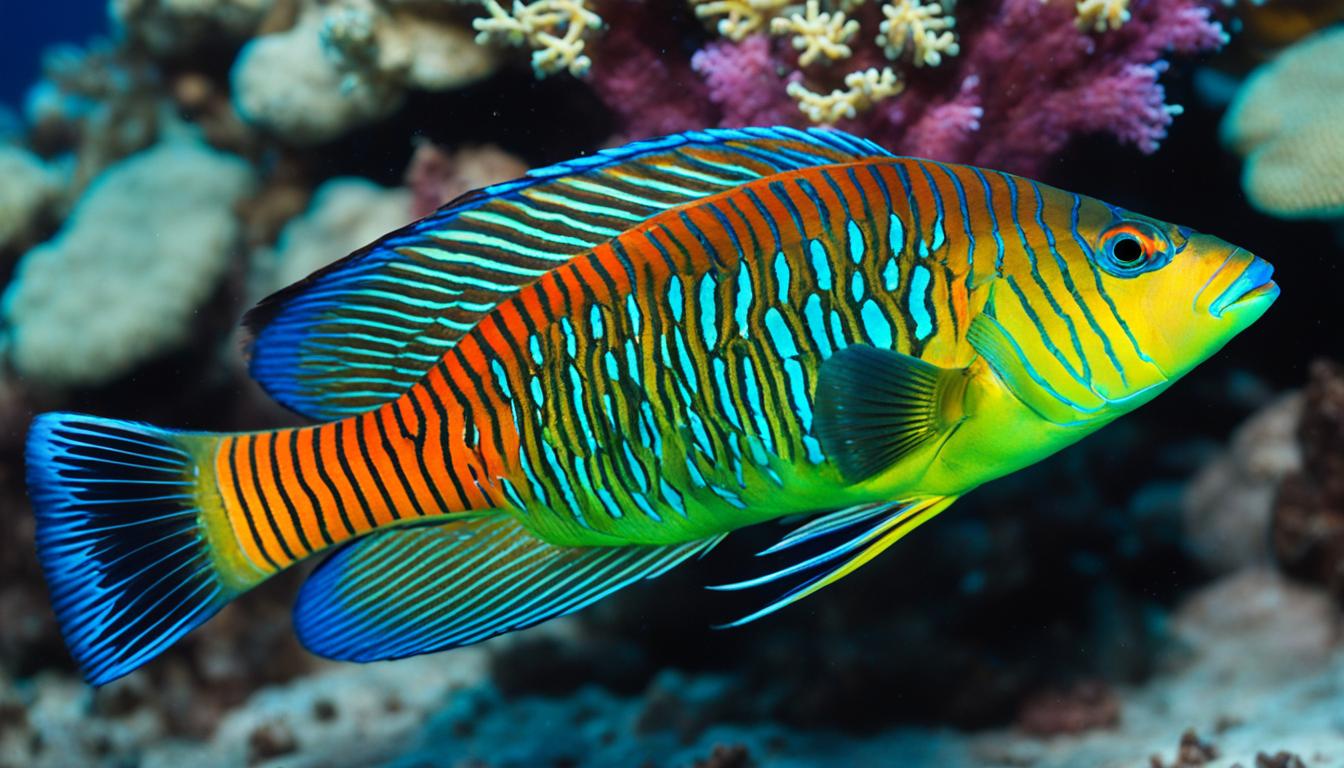
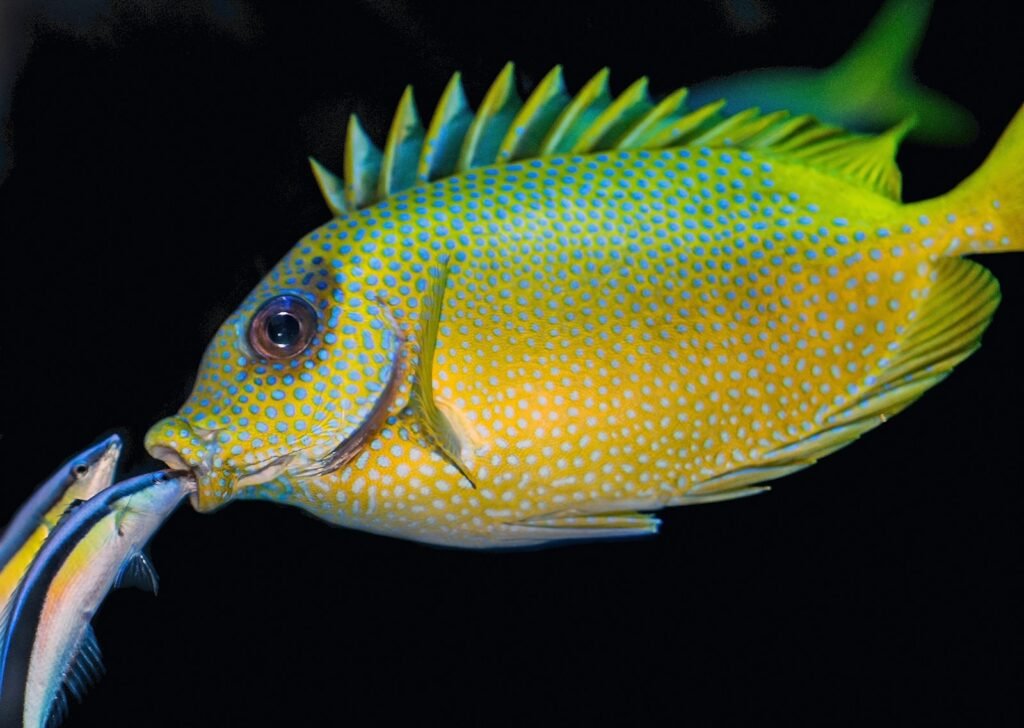
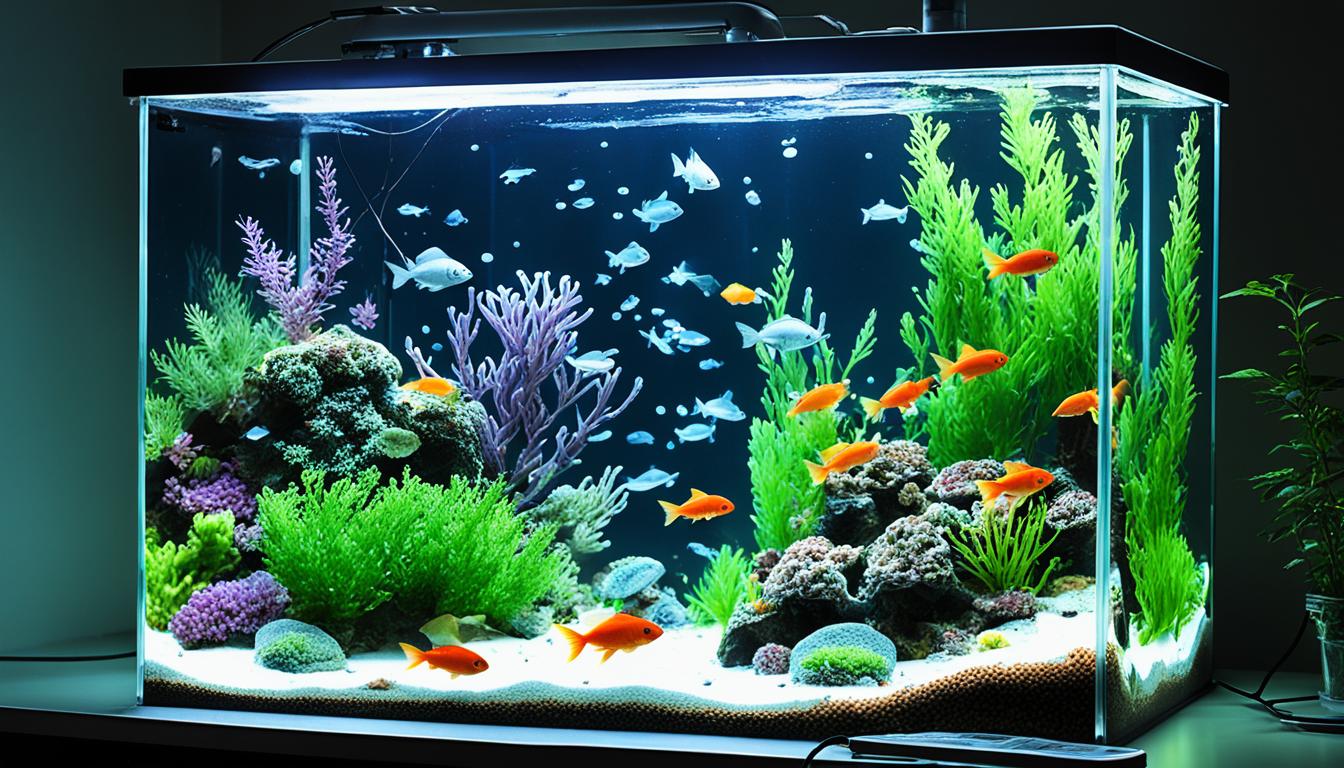
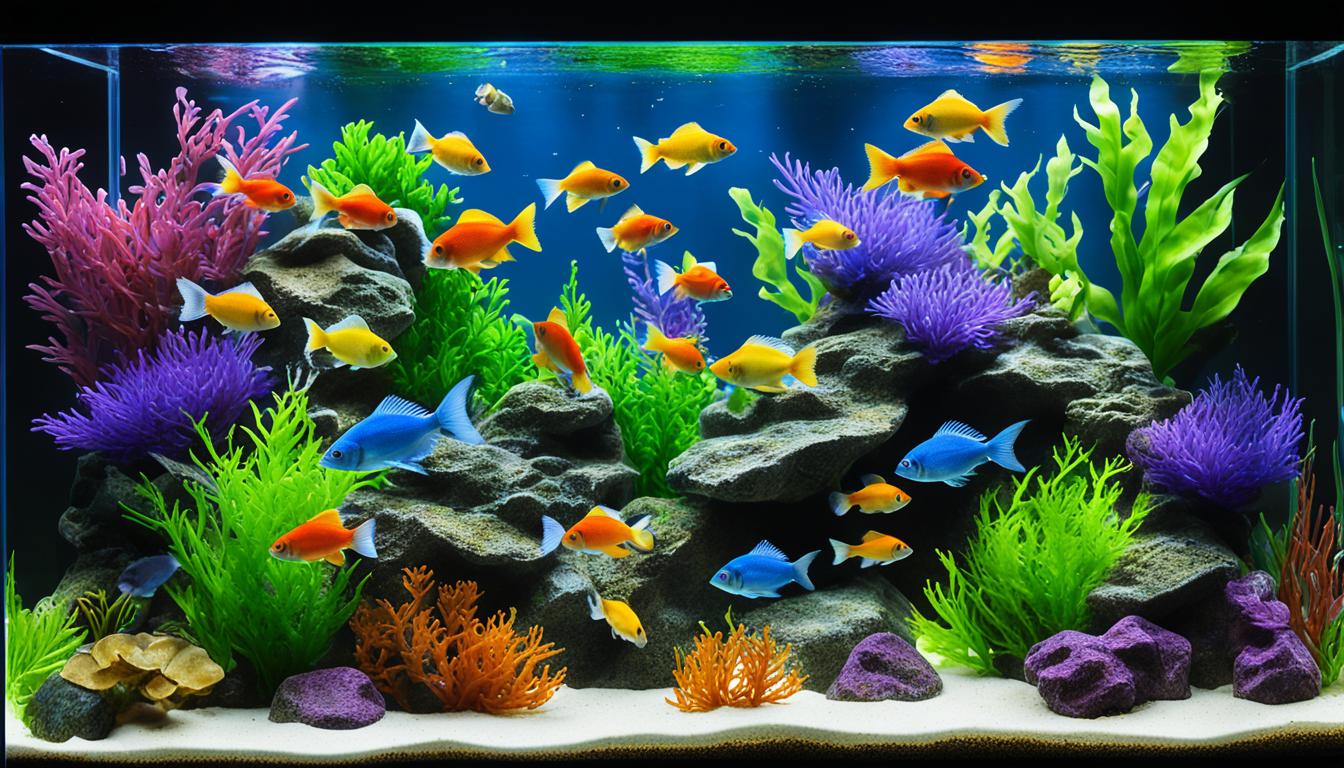






[…] Vibrant Wrasse Fish: Care Guide & Species Info […]
[…] Vibrant Wrasse Fish: Care Guide & Species Info […]
[…] Sheepshead Wrasse, also known as wrasse fish, is a prominent species in the marine world. With its vibrant colors and distinctive features, it […]